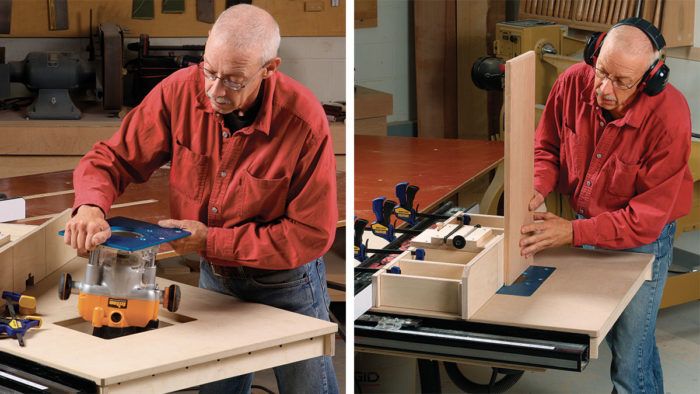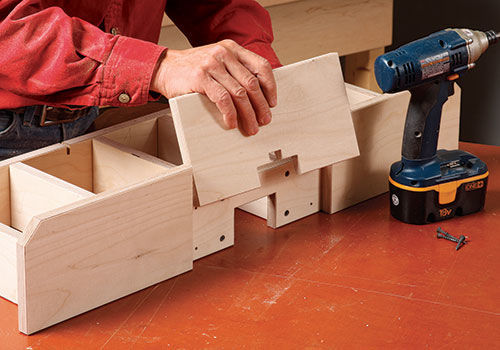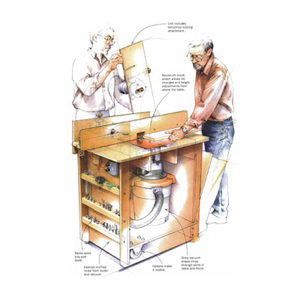Space-Saving Router Table
It’s the old tablesaw extension trick, but done right this time
Synopsis: If you want your tablesaw to serve double-duty as a router table, check out this space-saving version first. It solves the problems of a too-short rip fence, dust collection, and eventual sagging that plague most such tables. This table has a simple but effective fence that is tall enough for vertical routing and has a replaceable insert. The fence clamps to the tablesaw’s rip fence, so adjustments are easy and it’s simple to put on and take off. Above-the-table dust collection is integrated into the fence, and a rigid plywood frame keeps the table from sagging.
I’ve seen many tablesaw extension wings turned into router tables, and it’s not a bad idea on paper. You get an indispensable woodworking machine without consuming an extra inch of shop space. And, you can take advantage of the solid, accurate fence already in place on the saw (or so you think). But it’s not enough to simply drop a router plate into the melamine extension wing. For one thing, the rip fence is not ready for routing. Not only is it too short for vertical jobs like sliding dovetails, but the bit must be buried in the fence for most tasks, and screwing a couple of scraps to the back of the rip fence just doesn’t cut it. dust collection also is a problem, because there’s no efficient way to collect from above the table. And single-layer tables eventually begin to sag under the weight of the router.

This router table solves all of those problems and a few more. First, it has a simple but effective fence that is tall enough for vertical routing. There is a replaceable insert, so you can bury bits in the fence and get zero-clearance routing when you need it. The fence clamps to the tablesaw’s rip fence, so adjustments are easy. Plus, it’s a snap to put on and take off. Above-the-table dust collection is integrated into the fence—and it really works. Finally, a rigid plywood frame under the table eliminates sag.
The router matters, too
I chose the Triton TrC001 router, because it specializes in table-routing and has impressed editors in past tool reviews. It allows above-the-table bit changes and height adjustments, which will save you hours of hassle. It also has great dust collection of its own, so you can catch dust from beneath the table, too, making most jobs practically dust-free. To avoid the hassle of attaching the router directly to the table, I used a predrilled router plate from rockler. I used Baltic-birch plywood for the table’s support frame and fence because it is stable and holds screws very well, and I used lightweight MdF for the top because it routs well and makes a smooth, durable work surface. one sheet of each is more than enough to make the entire table.
From Fine Woodworking #216
For the full article, download the PDF below:























Log in or create an account to post a comment.
Sign up Log in